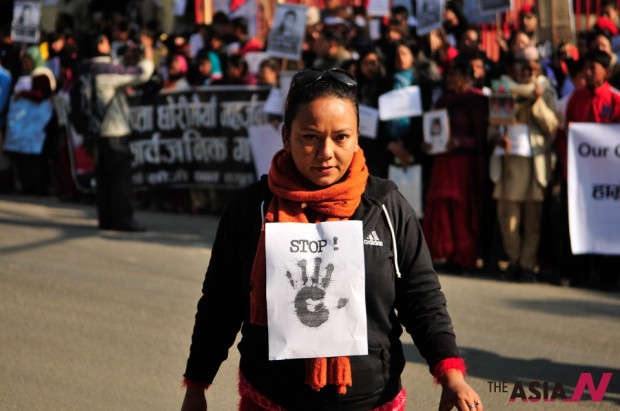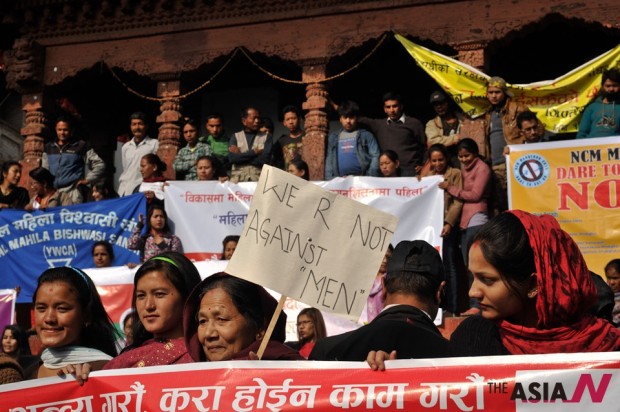Human trafficking persists in post-conflict Nepal
Understanding the historical dimensions of the fight against human trafficking is important for several reasons. Although many scholars working on the issue of human trafficking offer some sort of recognition of the history of the problem, the most typical approach is to see modern forms of trafficking as an outgrowth of rapid globalization since the end of the Cold War. Although human trafficking and especially trafficking for sexual exploitation is believed to be the oldest crime prevailing in human society, the fight against human trafficking has become more prominent in the 19th century.
Sex trafficking has existed since the dawn of civilization. The practices of sexual exploitation and sexual slavery are older than recorded history. Whenever a woman, girl, man or boy was without status or protection, he or she could have been subjected to sexual exploitation. The same is true today.
Sex trafficking is a form of slavery and involuntary servitude resulting in grave human rights violations. Sex trafficking involves individuals profiting from the sexual exploitation of others and has severe physical and psychological consequences for its victims.

A Nepalese demonstrator with a placard attends the protest against sexual violence in Kathmandu, Nepal, Jan. 1, 2013. (Photo : Xinhua/NEWSis)
$32 billion global industry
Although anyone can become a victim of trafficking, it predominantly affects women and children. Human sex trafficking violates women and children’s basic human rights, including the right to be free from slavery and slavery-like practices; the right to equal protection under the law; the right to be free from discrimination based on race, nationality, and gender; and the right to life, security of person and freedom from torture. Governments also violate trafficked persons’ rights when they fail to prevent sex trafficking, prosecution of perpetrators or provide trafficked persons with effective remedies for these violations, such as access to courts and compensation.
Human trafficking is a $32 billion global industry involving millions of people worldwide. Women and girls as young as seven are sold to brothels. Children are compelled to become soldiers.
More than 12,000 girls and women are trafficked for commercial sexual exploitation from Nepal every year. These girls are subjected to multiple rapes, inhumane inflictions, and are also tortured and denied access to basic human rights. Even after these girls are rescued and liberated from the brothels, a stigma is associated with them. There is intense hatred and blame. Society does not accept these girls. They cannot easily feel peace within and outside. My organization, Maiti Nepal, has rescued more than 25,000 girls/women from sexual slavery and successfully rehabilitated and reintegrated them into society since 1993. Besides cross border trafficking to India and China (a new destination indeed), trafficking to overseas destinations in the guise of foreign employment and internal trafficking in the entertainment sectors (massage parlours, dance bars and cabin style restaurants) are the major atrocities that I have experienced in recent years in my country.
Nepal has experienced historical political upheavals. After the monarchy was abolished, people’s major political rights were restored and constitutionally, significant strides have been made regarding the rights of women, children and ethnic minorities. But as the Federal Democratic Republic of Nepal is yet to be institutionalized and the new constituent assembly is yet to replace the interim constitution, chaos prevails and obstacles to peace exist. Nepal has just recuperated from the insurgency.

Nepalese women attend a rally to mark International Women’s Day in Kathmandu, Nepal, March 8, 2013. (Photo : Xinhua/NEWSis)
Modern day slavery
Women’s engagement in peace building is recognized by many international institutions as a crucial element of recovery and conflict prevention – a fact reflected in the Security Council resolution 1325 (2000), which commits the United Nations (UN) and its Member States to engage women in conflict prevention and peace building. The serious threat of sexual and gender-based violence (SGBV) during and after armed conflict is also recognized by the UN, as well as at the national level through national plans of action on SGBV. In the post conflict reconstruction scenario, the role of women in Nepal’s peace building process has become more visible in some of the aspects whereas the visibility is still undermined in some points. The government of Nepal still has to significantly recognize women’s roles in peace building and conflict initiatives, reconciliation mechanisms, increasing access to justice, access to support services, awareness–raising and attitudinal change, conflict monitoring system and making communities safer.
Human trafficking in Nepal has become more organized in the post conflict reconstruction scenario. Because of the acute sense of gender discrimination and prevailing unemployment, young girls, especially teenagers are falling prey to traffickers. Traffickers often reach poverty ridden families where girls are staying somewhat idle and becoming a burden to the parents. They entice the parents with fake assurances that their daughter would get a good job in the city and would be supporting herself and the family financially. The naive parents believe the traffickers, not knowing their intentions and wish for the good future of their daughters. Unfortunately, the girls end up in the brothels.
Human trafficking is modern day slavery. It should come to an end. If all of us extend our helping hands to this mission, I believe that one day this crime will no longer exist in our society.



























































